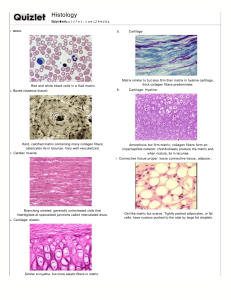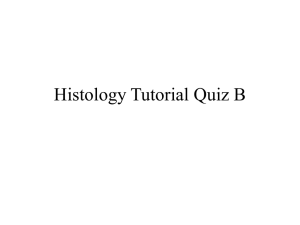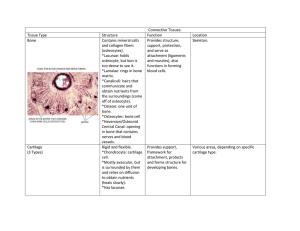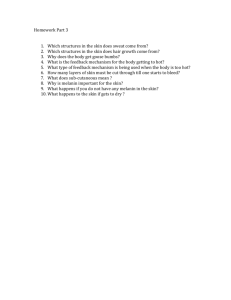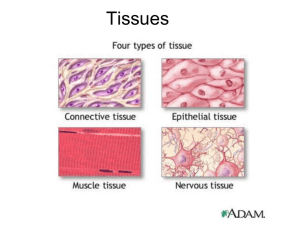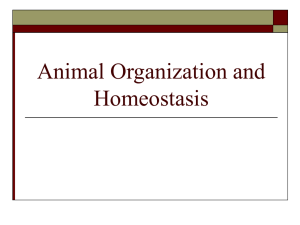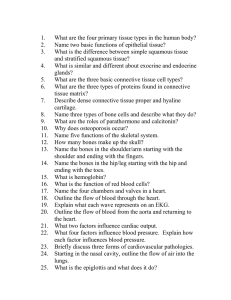Connective Tissue Types & Functions Presentation
advertisement
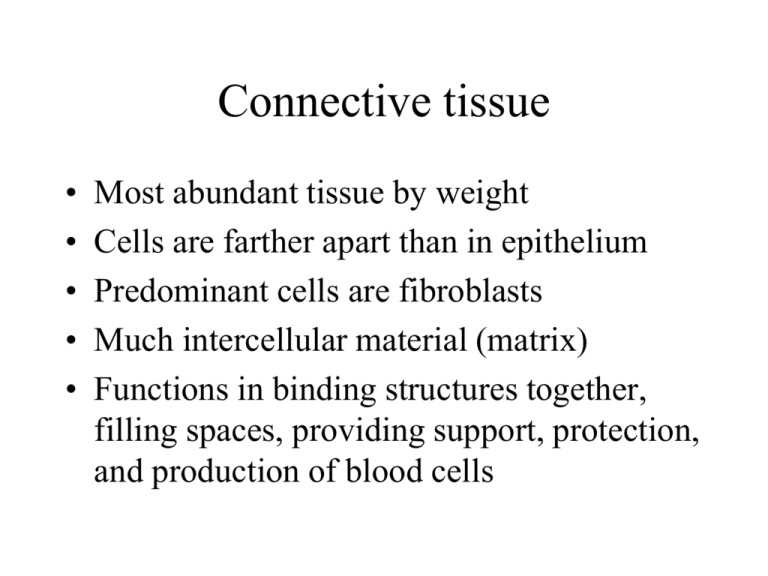
Connective tissue • • • • • Most abundant tissue by weight Cells are farther apart than in epithelium Predominant cells are fibroblasts Much intercellular material (matrix) Functions in binding structures together, filling spaces, providing support, protection, and production of blood cells •Loose connective Tissue (Areolar) • Binds skin to underlying organs • Fills spaces between muscles • Lies beneath epithelium to nourish those cells •Adipose tissue (Fat) • Specialized loose connective tissue • Found beneath skin, between muscles, around organs, around joints • Acts as a protective cushion, insulator and storer of fat molecules •Fibrous (Dense) Connective Tissue • • • • • • • Dense, closely packed collagen and elastic fibers Fewer cells Strong Poor blood supply Slow to repair Forms tendons & ligaments Also found in the white of the eye & deeper dermis of the skin •Cartilage • Matrix of collagen fibers • Cartilage cells (chondrocytes) found in chambers (lacunae) • Enclosed in a fibrous connective tissue covering (perichondrium) • Only blood supply is in the perichondrium •3 types •A. Hyaline cartilage • Most common • Found on ends of bones in joints, nose, rings of the trachea & bronchi •B. Elastic cartilage • More flexible • Found in the external part of the ear & part of the larynx •C. Fibrocartilage • Tough • Shock absorber • Found between vertebral disks, between bones in knee & pelvic bones •Bone • Most rigid tissue due to collagen fibers and mineral salts in the matrix • Bone cells (osteocytes) found in chambers (lacunae) • Blood vessels found in canals throughout • Protects, supports, serves as an attachment for muscles, forms blood cells Blood • Matrix is plasma • Red blood cells, white blood cells, & platelets • Transports nutrients, gases, wastes
